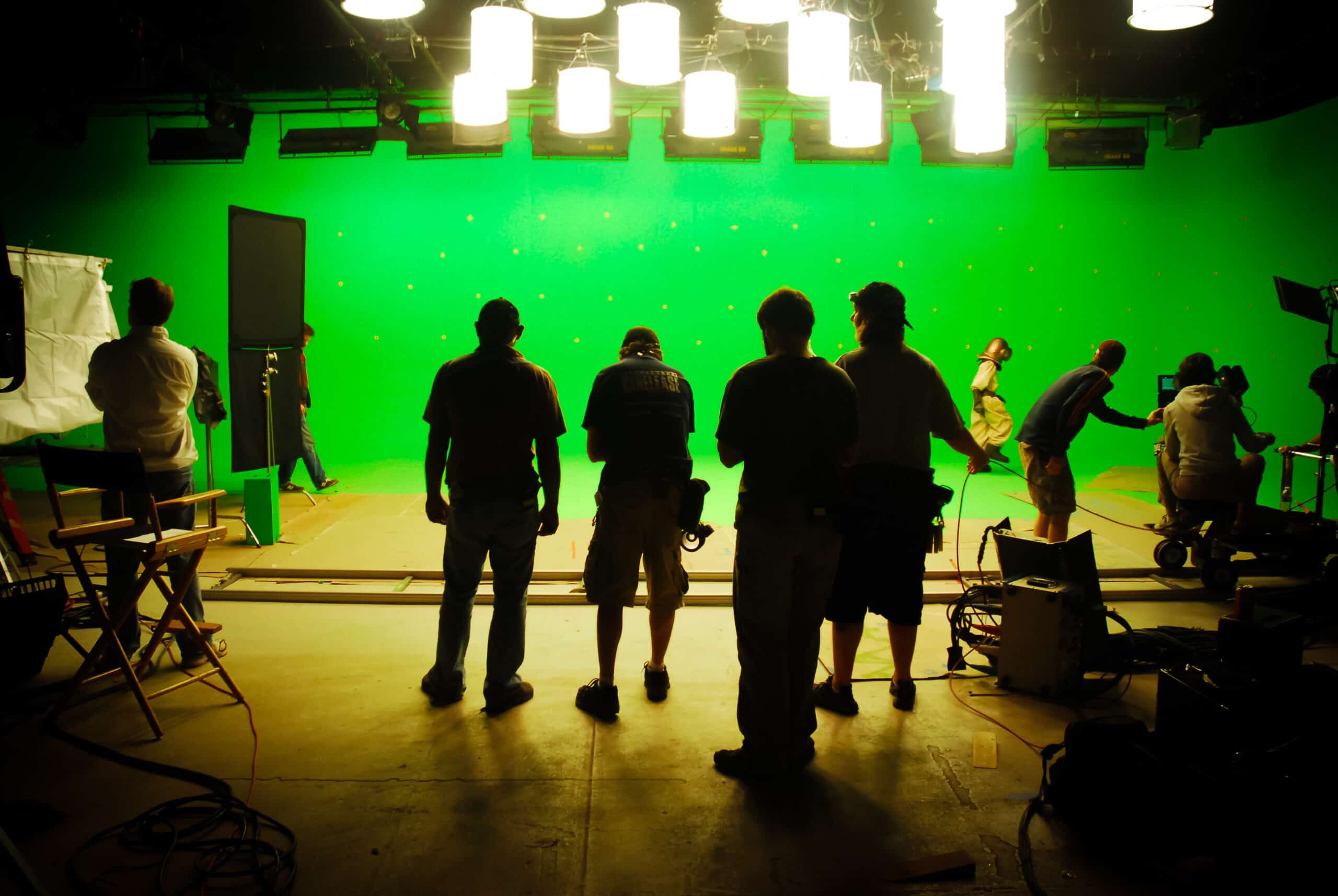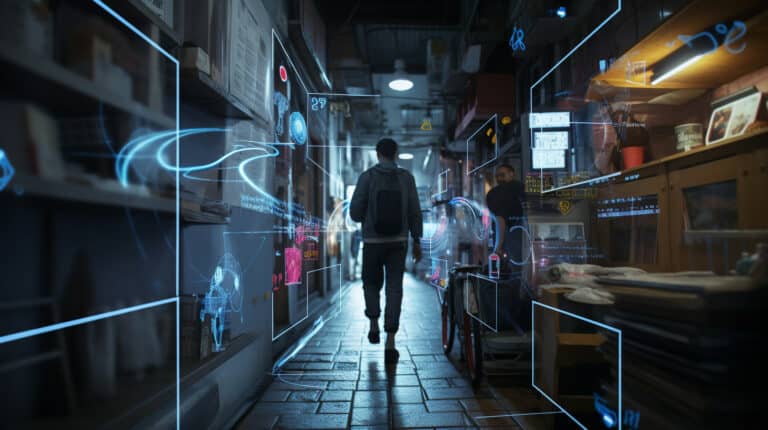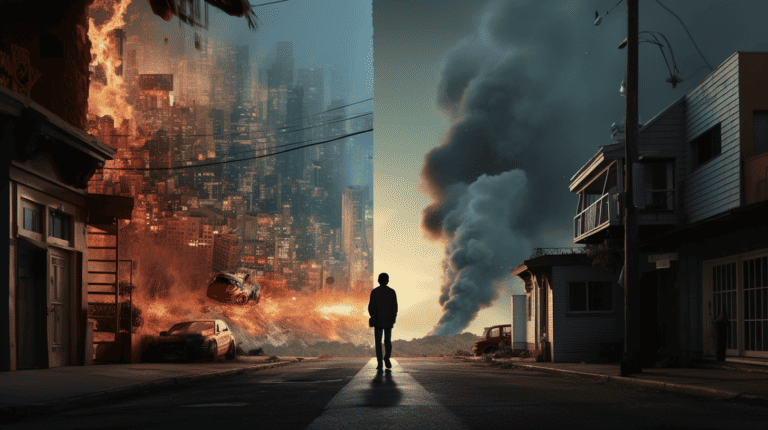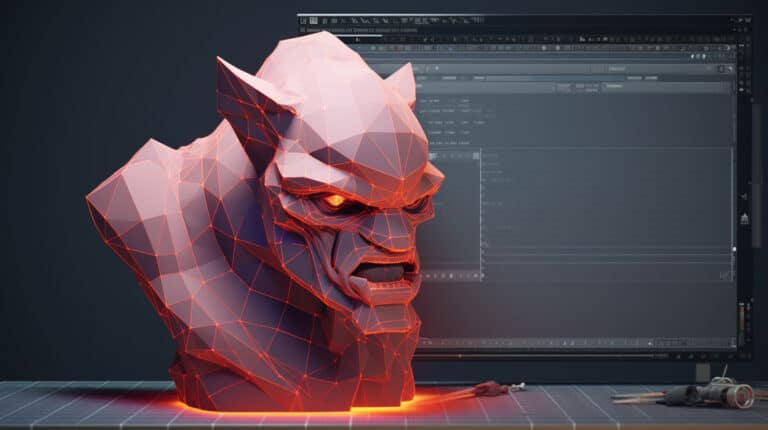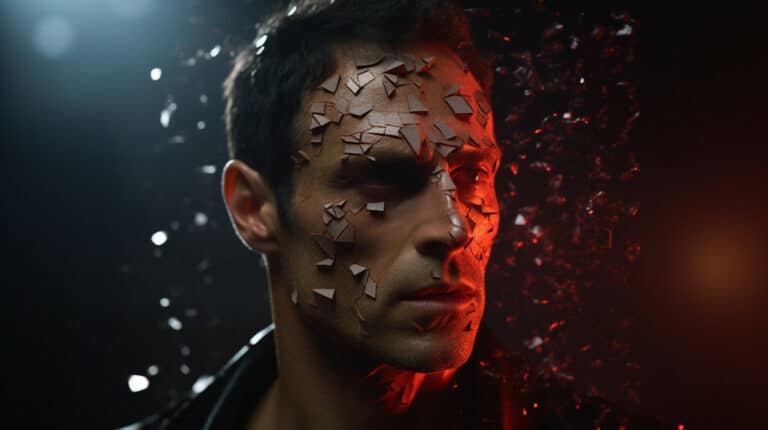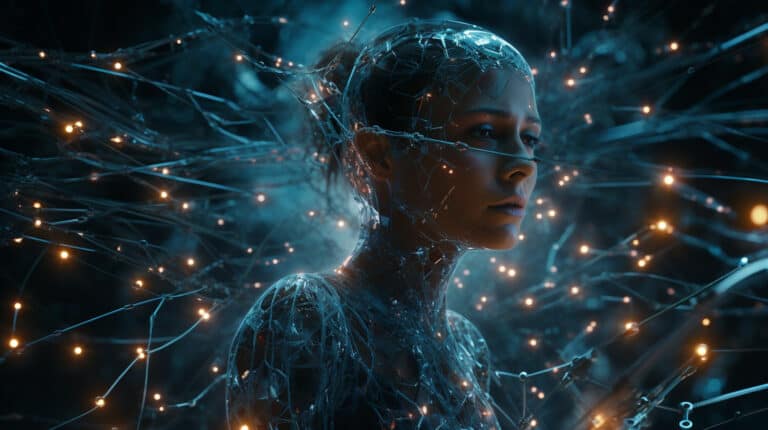Creating Stunning Visual Effects Without a Green Screen
Want to create stunning visual effects without the hassle of a green screen? Look no further! This article will reveal alternative techniques that will help you achieve jaw-dropping effects without the need for a green screen.
With advancements in technology and practical tips from industry experts, you’ll be able to bring your creative visions to life.
Get ready to amaze your audience and take your visual effects to the next level!
Key Takeaways:
- Real-time rendering technology allows for instant feedback and flexibility in creating visual effects.
- Virtual production techniques enable the seamless integration of virtual environments and realistic performances.
- Utilizing real-time rendering engines reduces post-production work and enhances the creative process.
- Virtual production is a game-changer in creating stunning visual effects without the need for a green screen.
Introduction
When it comes to film and video production, visual effects play a crucial role in creating stunning and immersive experiences for viewers.
Traditionally, green screens have been used to seamlessly integrate actors into digitally created environments.
However, with advancements in technology and creative techniques, it’s now possible to achieve incredible visual effects without relying on a green screen.
Importance of visual effects in film and video production
Visual effects play a crucial role in enhancing the visual storytelling experience in film and video production. They have the power to transport audiences to fantastical worlds, bring mythical creatures to life, and create breathtaking action sequences. Here are four reasons why visual effects are important in film and video production:
- Imagination Unleashed: Visual effects allow filmmakers to bring their wildest imaginings to life on the screen, pushing the boundaries of what’s possible in storytelling.
- Realism and Authenticity: Visual effects can be used to create realistic environments and characters that would otherwise be impossible or impractical to film, adding depth and authenticity to the storytelling.
- Emotional Impact: Visual effects can evoke strong emotions in the audience, heightening the impact of crucial scenes and immersing viewers in the story.
- Enhanced Cinematic Experience: Visual effects enhance the overall cinematic experience, captivating viewers and keeping them engaged from start to finish.
In short, visual effects are a powerful tool that enables filmmakers to create stunning and unforgettable moments on screen, making them an essential component of film and video production.
Traditional use of green screens for creating visual effects
To create stunning visual effects without a green screen, you’ll need to understand the traditional use of green screens in creating these effects.
Green screens have long been a staple in the world of visual effects, allowing filmmakers to seamlessly integrate actors and objects into fantastical or impossible environments. By filming in front of a green screen, the background can be digitally replaced with any desired setting during post-production. This technique offers immense flexibility and creative possibilities, enabling filmmakers to transport audiences to different worlds or eras. Green screens have become a fundamental tool in the visual effects industry, providing a valuable means of achieving realistic and awe-inspiring effects.
However, as technology advances, filmmakers are discovering new methods to create stunning visual effects without relying solely on green screens.
Advancements in Visual Effects Technology
Let’s explore the exciting advancements in visual effects technology that have revolutionized the way stunning visuals are created without a green screen.
Real-time rendering has enabled filmmakers to see their VFX shots come to life instantly, giving them more control and flexibility in the creative process.
Additionally, virtual production techniques have opened up new possibilities by seamlessly integrating virtual environments with live-action footage, resulting in breathtaking and immersive cinematic experiences.
Real-time rendering
Did you know that real-time rendering engines have revolutionized the way visual effects are created? By utilizing these advanced technologies, filmmakers and visual effects artists can achieve stunning results without the need for a green screen.
The benefits of real-time rendering are twofold – it offers greater efficiency, allowing for faster iterations and real-time feedback, and it provides flexibility, enabling artists to make changes on the fly and experiment with different creative options.
With real-time rendering, the possibilities for creating jaw-dropping visual effects are truly endless.
Utilizing real-time rendering engines for creating visual effects
When you want to create stunning visual effects without a green screen, one effective method is by utilizing real-time rendering engines. These cutting-edge tools offer a range of benefits, including:
- Real-time feedback: See the effects instantly, allowing for quick adjustments and experimentation.
- Interactivity: The ability to interact with the scenes in real-time, enhancing the creative process.
- Cost-effectiveness: Real-time rendering reduces the need for post-production work, saving time and resources.
- Seamless integration: Easily integrate real-time rendered effects into live-action footage for a seamless final product.
Benefits of real-time rendering in terms of efficiency and flexibility
One key benefit of real-time rendering engines is the efficient and flexible creation of stunning visual effects without the need for a green screen. With real-time rendering, you can seamlessly integrate digital elements into live footage, saving time and resources. The ability to make instant adjustments and see immediate results allows for greater creativity and experimentation. Real-time rendering also enables collaboration and iteration, empowering artists to refine their work in real-time. This technology revolutionizes the visual effects industry, opening up new possibilities for filmmakers and artists alike.
| Benefits of Real-Time Rendering | Efficiency and Flexibility |
|---|---|
| Seamless integration of digital elements into live footage | Saves time and resources |
| Instant adjustments and immediate results | Greater creativity and experimentation |
| Collaborative workflow and iterative process | Refinement in real-time |
| Revolutionizes the visual effects industry | Expands possibilities for filmmakers and artists |
Virtual production
Now, let’s explore the exciting world of virtual production.
With the advancements in visual effects technology, virtual sets and environments have become a game-changer in creating stunning visual effects without the need for a green screen.
Introduction to virtual production techniques
Explore the cutting-edge world of virtual production techniques and discover how advancements in visual effects technology have revolutionized the way stunning visual effects can be created without the need for a green screen.
- Real-time rendering allows for immediate visualization of virtual environments.
- Virtual cameras provide filmmakers with limitless creative possibilities.
- Motion capture technology captures realistic performances for digital characters.
- Augmented reality integration seamlessly blends the virtual and physical worlds.
Using virtual sets and environments for creating visual effects without a green screen
Continue exploring the world of virtual production techniques by utilizing virtual sets and environments to create stunning visual effects without the need for a green screen.
With advancements in visual effects technology, filmmakers can now immerse themselves and their audiences in entirely digital worlds. By combining live-action footage with computer-generated backgrounds and environments, virtual sets and environments provide a cost-effective and flexible alternative to traditional green screen techniques.
But what’re some other techniques that allow for visual effects without a green screen? Let’s find out.
Alternative Techniques for Visual Effects Without a Green Screen
Did you know that there are alternative techniques for creating stunning visual effects without using a green screen?
Projection mapping is one such technique that allows you to project images onto objects or surfaces, creating the illusion of a different environment.
Motion capture is another powerful tool that captures the movements of actors and translates them into a digital character.
And with augmented reality, you can overlay virtual elements onto the real world, seamlessly blending the two to enhance your visual effects.
These techniques offer exciting possibilities for filmmakers and creators to push the boundaries of storytelling and immerse audiences in captivating visual worlds.
Projection mapping
Have you ever wondered how movies and TV shows create stunning visual effects without the use of a green screen? One alternative technique that has gained popularity in recent years is projection mapping.
By projecting images onto objects or surfaces in the scene, projection mapping can replace the need for a green screen, allowing for seamless integration of virtual elements into the real world.
This innovative method opens up a world of possibilities for filmmakers and visual effects artists, pushing the boundaries of what can be achieved on screen.
Exploring the concept of projection mapping for visual effects
You can easily achieve stunning visual effects without a green screen by exploring the concept of projection mapping. With projection mapping, you can transform any surface into a dynamic canvas.
Here are four reasons why projection mapping is an excellent alternative to green screens:
- Immersive experiences: Projection mapping creates a captivating environment, enveloping the viewer in a visually stunning world.
- Real-time interaction: Projection mapping allows for real-time interaction and responsiveness, enhancing the audience’s engagement.
- Versatility: Projection mapping can be used on various surfaces, such as buildings, cars, or even human bodies, providing endless creative possibilities.
- Cost-effective: Compared to green screens, projection mapping requires fewer resources and equipment, making it a more budget-friendly option.
How projection mapping can replace the need for a green screen
To replace the need for a green screen, consider utilizing projection mapping, a technique that allows you to transform any surface into a dynamic canvas for stunning visual effects. With projection mapping, you can project images and videos onto various objects, creating an immersive and realistic environment without the need for a physical green screen. By mapping the projected content onto the surface, you can seamlessly integrate actors or objects into the scene, resulting in visually captivating shots.
Now let’s explore another alternative technique for visual effects: motion capture.
Motion capture
Motion capture technology has revolutionized the way visual effects are created. It allows for more realistic and accurate human movements to be captured. By using motion capture, filmmakers can seamlessly integrate computer-generated characters or objects into live-action footage. This enhances the overall visual experience for the audience.
The benefits of motion capture extend beyond just creating stunning visual effects. It also saves time and resources. Motion capture eliminates the need for traditional green screen setups and post-production editing.
Utilizing motion capture technology to create realistic visual effects
One effective way to create stunning visual effects without a green screen is by implementing motion capture technology. This advanced technique allows filmmakers to capture the movements of actors and transfer them onto virtual characters or objects in a digitally created environment.
With motion capture, you can achieve realistic and seamless integration of live-action footage with computer-generated elements. It offers endless possibilities for creating mind-blowing visual effects that were once only possible with the use of a green screen.
Now, let’s explore the benefits of motion capture in terms of capturing human movements accurately.
Benefits of motion capture in terms of capturing human movements accurately
By utilizing motion capture technology, you can accurately capture the movements of individuals, allowing for precise integration of human actions into visual effects without the need for a green screen. This technique offers numerous benefits, including the ability to capture subtle nuances and realistic gestures that may be difficult to replicate manually.
With motion capture, you can achieve a level of authenticity and believability in your visual effects that adds an extra layer of depth and immersion for your audience.
Augmented reality
Augmented reality has revolutionized the world of visual effects. It offers a dynamic and immersive alternative to the traditional green screen. By seamlessly integrating virtual elements into real-world environments, augmented reality enhances the realism of visual effects. This creates stunning and believable scenes. Filmmakers can now bring their imagination to life in a way that was previously unimaginable with this technology. It pushes the boundaries of what’s possible in visual storytelling.
Incorporating augmented reality into visual effects production
To incorporate augmented reality into your visual effects production, you can utilize alternative techniques that eliminate the need for a green screen. By leveraging the power of augmented reality, you can bring virtual elements into the real world seamlessly.
Here are four ways you can incorporate augmented reality into your visual effects production:
- Use marker-based tracking to anchor virtual objects in the real environment.
- Employ depth sensing cameras to accurately place virtual elements in the scene.
- Utilize motion tracking technology to synchronize virtual and real-world movements.
- Take advantage of real-time rendering engines to create interactive augmented reality experiences.
With these techniques, you can elevate your visual effects production and create stunning and immersive experiences for your audience.
How augmented reality can enhance the realism of visual effects without a green screen
You can enhance the realism of visual effects without a green screen by incorporating augmented reality techniques. Augmented reality (AR) can seamlessly blend virtual elements with real-world footage, creating a more immersive and believable experience. By using AR, filmmakers can place digital objects and characters directly into the scene, eliminating the need for expensive sets and props. This table highlights five ways AR enhances visual effects without a green screen:
| Augmented Reality Techniques for Visual Effects | |
|---|---|
| 1 | Virtual object insertion |
| 2 | Real-time tracking and compositing |
| 3 | Dynamic lighting and shadows |
| 4 | Interactive virtual characters and creatures |
| 5 | Virtual set extensions and background replacement |
AR opens up new possibilities for filmmakers and allows them to push the boundaries of visual effects, creating stunning and realistic scenes without the limitations of a green screen.
Practical Tips for Creating Visual Effects Without a Green Screen
To create stunning visual effects without a green screen, it’s important to master lighting techniques, camera techniques, and post-production editing.
By understanding how to manipulate lighting, you can create the right atmosphere and enhance the realism of your effects.
Utilizing camera techniques such as framing and angles can add depth and dimension to your shots.
Lastly, post-production editing allows you to fine-tune your effects and seamlessly integrate them into your footage.
Lighting techniques
To create stunning visual effects without a green screen, proper lighting is crucial. It ensures seamless integration of the effects into the scene, making them look realistic and believable.
Whether you’re shooting indoors or outdoors, understanding lighting techniques and implementing them consistently is key to achieving professional-looking results.
Importance of proper lighting for seamless integration of visual effects
For seamless integration of visual effects without a green screen, it’s essential to prioritize proper lighting techniques. Here are four key aspects to consider when working with lighting for visual effects:
- Light direction: Ensure that the direction of the light matches the virtual environment to create a realistic effect.
- Light intensity: Adjust the intensity of the light to match the lighting conditions in the virtual scene.
- Light color: Use color gels or filters to match the color temperature and mood of the virtual environment.
- Shadows: Pay attention to the placement and size of shadows to ensure they align with the virtual objects.
By mastering these lighting techniques, you can seamlessly integrate visual effects into your footage without the need for a green screen.
Now, let’s explore some tips for achieving consistent lighting in different environments.
Tips for achieving consistent lighting in different environments
Achieve consistent lighting in different environments by adjusting your light setup to match the specific conditions of each scene. Consider the natural lighting available and supplement it with artificial lights as needed. Use diffusers and reflectors to control the intensity and direction of light. Experiment with different light sources and angles to create the desired mood and atmosphere. By carefully planning and adapting your lighting techniques, you can ensure that your visual effects seamlessly blend into any environment.
| Lighting Technique | Description | Benefits |
|---|---|---|
| Natural Lighting | Utilize available sunlight or ambient light sources. | Creates a realistic and natural look. |
| Artificial Lighting | Use artificial lights to supplement or replace natural light. | Provides control over lighting conditions. |
| Diffusers | Place translucent materials in front of lights to soften the intensity. | Helps create a more flattering and even lighting. |
| Reflectors | Use reflective surfaces to bounce light and fill in shadows. | Enhances the overall lighting and reduces harsh shadows. |
| Experimentation | Try different light sources and angles to achieve desired effects. | Allows for creative expression and unique visual styles. |
Camera techniques
When it comes to creating visual effects without a green screen, choosing the right camera angles and movements is crucial. The camera techniques you employ can greatly enhance the believability of the visual effects you’re integrating.
Choosing the right camera angles and movements for visual effects integration
Use dynamic camera angles and movements to seamlessly integrate visual effects into your footage without the need for a green screen. By carefully choosing the right camera angles and movements, you can enhance the impact of your visual effects and create a more immersive experience for your audience. Consider the following tips:
- Experiment with low angles to create a sense of power and dominance
- Utilize smooth and steady camera movements for a professional and polished look
- Incorporate dynamic tracking shots to add excitement and energy to your scenes
- Explore unconventional camera angles to provide a unique and engaging perspective.
How camera techniques can enhance the believability of visual effects without a green screen
Enhance the believability of your visual effects without a green screen through strategic camera techniques.
By carefully planning your shots and utilizing techniques such as perspective, depth of field, and camera movement, you can seamlessly integrate your visual effects into the scene.
These techniques help create a sense of realism and immersion, making the audience believe that the visual effects are part of the actual environment.
Post-production editing
When it comes to creating stunning visual effects without a green screen, post-production editing plays a crucial role.
By utilizing essential techniques in post-production, you can refine and enhance your visual effects to achieve a seamless integration into the final footage.
These tips will help you create a captivating visual experience that captivates your audience.
Essential post-production techniques for refining visual effects
Refine your visual effects using essential post-production techniques. To enhance the quality and realism of your effects, consider the following tips:
- Color grading: Adjusting the colors and tones of your footage can help match the visual effects seamlessly.
- Masking and rotoscoping: Precise masking and rotoscoping techniques allow you to isolate and manipulate specific elements in your scene.
- Motion tracking: Tracking the movement of objects or characters enables accurate placement and interaction with your effects.
- Layering and compositing: Combining multiple layers of footage and effects creates a cohesive and integrated final product.
Tips for seamless integration of visual effects into the final footage
To seamlessly integrate visual effects into your final footage without a green screen, focus on post-production editing techniques that enhance the overall quality and realism of your effects.
Use advanced compositing tools to match the lighting, color, and perspective of the scene. Pay attention to details like shadows, reflections, and motion blur to make the effects blend seamlessly with the live-action footage.
Experiment with different blending modes and opacity adjustments to achieve a natural and convincing result.
Case Studies of Successful Visual Effects Without a Green Screen
Now let’s take a closer look at some real-life examples of successful visual effects without the need for a green screen.
The film industry has seen impressive feats, such as creating fantastical worlds and creatures in movies like ‘Avatar’ and ‘The Lord of the Rings’ trilogy.
Additionally, the advertising industry has also embraced this technique, producing eye-catching commercials that seamlessly blend live-action footage with stunning visual effects.
These case studies serve as a testament to the power of creativity and innovation in achieving remarkable visuals without relying on a green screen.
Film industry examples
Have you ever wondered how filmmakers achieve stunning visual effects without relying on a green screen?
Let’s take a closer look at some successful films that used alternative techniques to create captivating visuals. By analyzing these case studies, we can gain insights into the creative solutions that filmmakers employed to bring their visions to life, showcasing the ingenuity and skill that goes into crafting believable and immersive worlds on screen.
Analyzing successful films that utilized alternative techniques for visual effects
You can explore various successful films that employed alternative techniques for visual effects without a green screen. These films showcase the creativity and ingenuity of filmmakers who found innovative ways to bring their visions to life.
Some notable examples include:
- ‘Gravity’ (2013): Director Alfonso Cuarón used a combination of practical effects, CGI, and innovative camera techniques to create the illusion of weightlessness in space.
- ‘Mad Max: Fury Road’ (2015): The film utilized a mix of practical effects, stunts, and minimal CGI to create its high-octane action sequences.
- ‘Inception’ (2010): Director Christopher Nolan employed practical effects, miniatures, and clever set design to manipulate gravity and create mind-bending visuals.
These films demonstrate that with the right techniques and a strong vision, stunning visual effects can be achieved without relying solely on a green screen.
How these films achieved stunning visual effects without a green screen
To understand how these films achieved stunning visual effects without a green screen, explore the innovative techniques employed by filmmakers in the industry. From using practical effects and miniatures to utilizing advanced CGI and motion capture technology, these filmmakers pushed the boundaries of creativity to create seamless and immersive visual experiences. By understanding these techniques, we can gain insight into the limitless possibilities of visual effects in film.
Now, let’s delve into the world of advertising industry examples and discover how they too have achieved stunning visual effects without a green screen.
Advertising industry examples
Take a moment to explore the world of advertising and how visual effects have been utilized to create impactful and memorable advertisements without the use of a green screen.
Discover how these advertisements were able to convey their messages effectively through the clever integration of visual effects, captivating audiences and leaving a lasting impression.
From transforming everyday scenes into fantastical worlds to seamlessly blending real-life footage with computer-generated elements, these case studies showcase the power of visual effects in the advertising industry.
Examining creative advertisements that incorporated visual effects without a green screen
Explore the impressive visual effects achieved by creative advertisements that seamlessly incorporated visual effects without relying on a green screen. These innovative campaigns prove that it’s possible to captivate audiences and tell compelling stories without the need for traditional techniques.
Consider the following examples:
- Nike’s ‘Write the Future’ commercial used advanced CGI to create realistic soccer scenes.
- Coca-Cola’s ‘Happiness Factory’ employed a combination of practical effects and animation to bring a magical world to life.
- Apple’s ‘Shot on iPhone’ campaign showcased stunning visuals captured entirely on their smartphones.
- Volkswagen’s ‘The Force’ ad utilized clever editing and practical effects to create a memorable Star Wars-inspired story.
These examples demonstrate the power of creativity and technology in the world of advertising, pushing the boundaries of what’s possible without a green screen.
How these advertisements effectively conveyed their messages through visual effects
Continuing from our examination of creative advertisements that incorporated visual effects without a green screen, let’s now delve into how these ads effectively conveyed their messages through the use of stunning visual effects. These advertisements utilized visual effects to evoke strong emotions and captivate the audience. By combining compelling storytelling with visually striking effects, these ads were able to create a memorable and impactful experience for viewers. Let’s take a look at some examples in the table below:
| Advertisement | Emotion Evoked |
|---|---|
| Nike “Write the Future” | Inspiration |
| Coca-Cola “Happiness” | Joy |
| Apple “Think Different” | Empowerment |
| Volkswagen “The Force” | Amusement |
| Guinness “Surfer” | Awe |
These advertisements successfully used visual effects to connect with the audience on an emotional level, leaving a lasting impression and effectively conveying their messages.
Future Trends in Visual Effects Without a Green Screen
As you explore the future trends in visual effects without a green screen, two key areas to focus on are artificial intelligence and machine learning. These technologies have the potential to revolutionize the way visual effects are created, allowing for more realistic and immersive experiences.
Additionally, virtual reality is another exciting avenue to watch, as it offers new possibilities for creating stunning visual effects without the need for a physical green screen.
With these advancements on the horizon, the future of visual effects is bound to be even more impressive and captivating.
Artificial intelligence and machine learning
As you explore the future of visual effects without a green screen, one can’t ignore the significant role that artificial intelligence (AI) and machine learning (ML) are playing in revolutionizing this field.
With AI and ML, there’s immense potential for advancements in creating stunning visual effects without the need for a physical green screen.
Imagine the endless possibilities and creative freedom that can be achieved through the intelligent algorithms and deep learning capabilities of these technologies.
The role of AI and ML in revolutionizing visual effects production
Artificial intelligence and machine learning have revolutionized visual effects production. These technologies have eliminated the need for a green screen and have opened up new creative possibilities. Some of the benefits offered by these cutting-edge technologies include real-time rendering and compositing, which allow for instant feedback and adjustments. The seamless integration of virtual elements into live-action footage creates a more immersive viewing experience. Additionally, automatic object tracking and removal simplify the process of removing unwanted elements from a scene. Intelligent scene analysis enables accurate lighting and shading effects without the need for manual adjustments. With AI and ML leading the way in visual effects production, the possibilities are limitless. These technologies have opened up new avenues for creativity and innovation in the industry.
Potential advancements and possibilities in creating visual effects without a green screen
To further delve into the potential advancements and possibilities in creating visual effects without a green screen, you can explore the game-changing role of artificial intelligence and machine learning.
These technologies have the ability to revolutionize the way visual effects are created, making the process more efficient and realistic. With AI and ML, it becomes possible to automatically separate foreground elements from the background, eliminating the need for a green screen.
This opens up new doors for filmmakers and visual effects artists, allowing them to create stunning visuals without the limitations of traditional methods.
Virtual reality
Imagine a future where visual effects aren’t only seen on a screen, but experienced in a whole new way through virtual reality.
By integrating virtual reality technology into visual effects production, filmmakers can create a more immersive and interactive experience for audiences.
With virtual reality, viewers can step into the world of the film, becoming active participants in the story and feeling a deeper connection to the characters and environments.
Exploring the integration of virtual reality technology into visual effects production
You can now explore the integration of virtual reality technology into visual effects production, revolutionizing the future of visual effects without the need for a green screen.
With virtual reality, filmmakers can create realistic and immersive environments without the limitations of physical sets. This technology allows for greater flexibility, creativity, and cost-effectiveness in the production process.
How virtual reality can enhance the immersive experience of visual effects
With the integration of virtual reality technology into visual effects production, you can enhance the immersive experience by creating realistic and interactive environments that heighten audience engagement.
Virtual reality allows viewers to step into the world of the film, experiencing it firsthand and becoming active participants in the story.
Conclusion
As you wrap up your exploration of alternative techniques for creating visual effects without a green screen, it’s important to recognize the significance of staying updated with advancements in visual effects technology.
By keeping abreast of the latest tools and techniques, you can continue to push the boundaries of what’s possible in visual effects production.
Ultimately, the future of visual effects without a green screen holds immense potential, and it’s exciting to see how these advancements will shape the industry.
Recap of alternative techniques for creating visual effects without a green screen
In this article, we’ll summarize alternative techniques for creating visual effects without the need for a green screen. As we’ve discussed, there are several innovative methods that can help you achieve stunning visual effects without the hassle of a green screen.
Here’s a quick recap:
- Projection Mapping: By projecting images onto physical objects, you can create incredible visual effects that interact with the environment in real-time.
- Motion Tracking: With the help of advanced software, you can track the movement of an object or person and apply visual effects accordingly, seamlessly integrating them into the scene.
- Chroma Keying: This technique involves replacing a specific color in the footage with a desired background, allowing for the creation of visually stunning effects.
- Virtual Sets: By using virtual sets, you can transport your actors into any environment imaginable, without the need for physical sets.
Importance of staying updated with advancements in visual effects technology
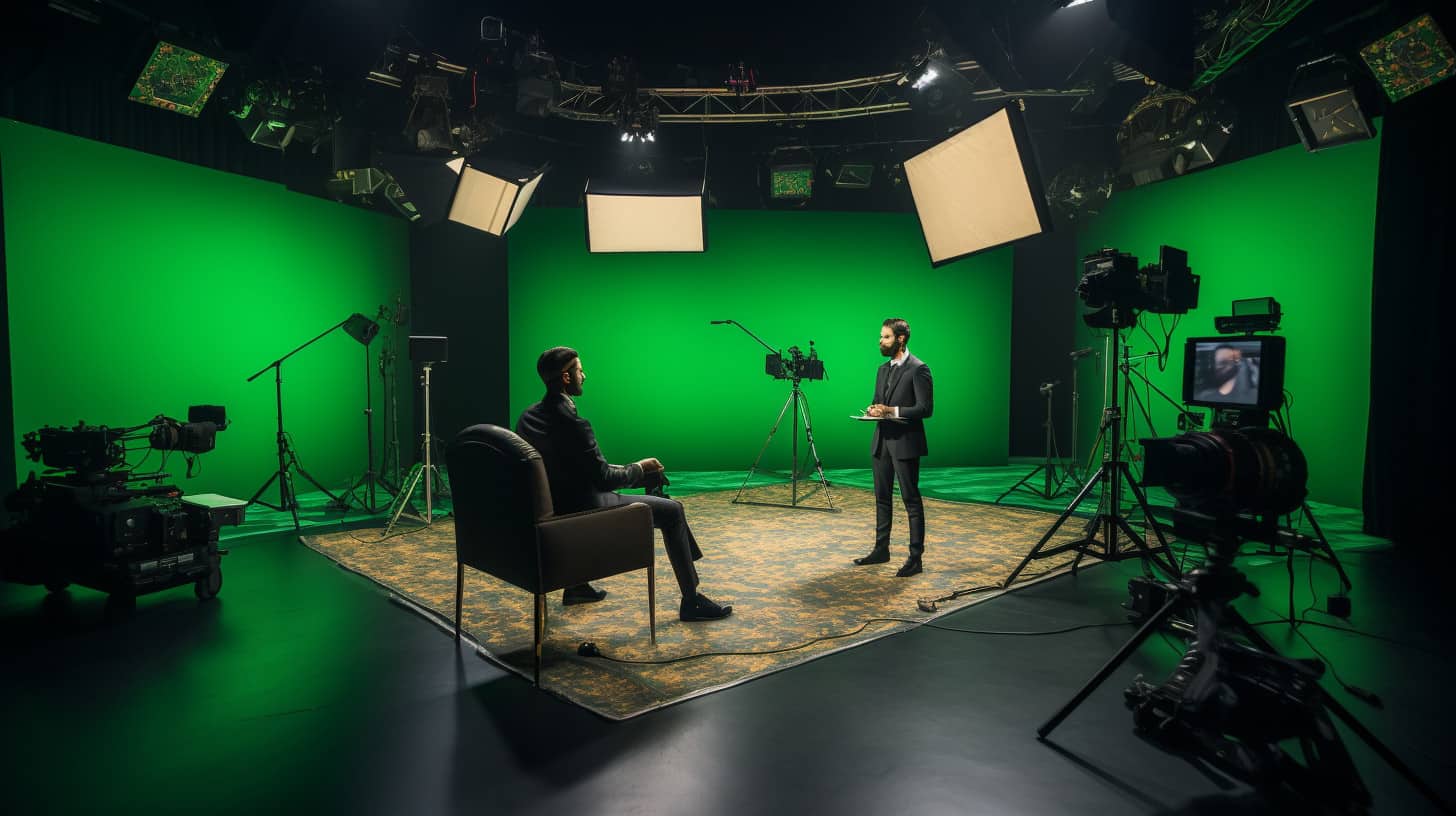
To stay ahead in the world of visual effects, it is essential for you to keep up with the evolving advancements in technology. The field of visual effects is constantly evolving, with new tools and techniques being developed every day. By staying updated with the latest advancements, you can ensure that you are able to create stunning visual effects that captivate your audience. This means keeping an eye on new software releases, attending industry conferences and workshops, and staying connected with other professionals in the field. The table below highlights some of the key advancements in visual effects technology that you should be aware of:
| Advancements in Visual Effects Technology |
|---|
| Real-time rendering |
| Artificial intelligence-based tools |
| Virtual reality and augmented reality |
| Cloud-based rendering |
| Machine learning algorithms |
Final thoughts on the future of visual effects production without a green screen
Now let’s dive into the future of visual effects production without a green screen and how you can continue to create stunning effects that captivate your audience.
- Real-time rendering: With advancements in technology, real-time rendering is becoming more accessible, allowing you to see the final result instantly and make adjustments on the fly.
- Virtual production: The integration of virtual production techniques, such as LED walls and virtual cameras, can create immersive environments that enhance storytelling and reduce post-production time.
- AI-assisted workflows: Artificial intelligence can streamline the visual effects process by automating repetitive tasks, freeing up time for artists to focus on creativity and innovation.
- Mixed reality experiences: Combining virtual and physical elements in real-time can create interactive experiences that blur the line between the real world and the digital realm.
As the visual effects industry continues to evolve, embracing these technologies will enable you to push the boundaries of creativity and deliver truly breathtaking effects. Embrace the future and explore the endless possibilities of visual effects production without a green screen.

